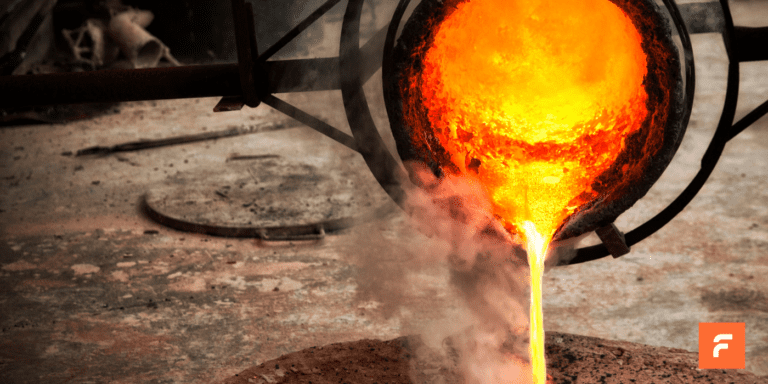The foundry industry, the ancient art and science of casting molten metal into desired shapes, forms the silent backbone of modern civilization. From the engine blocks in our cars and the structural components of our buildings to the intricate parts within medical devices and aerospace equipment, castings are ubiquitous. Yet, despite its foundational role, the foundry sector is far from static. It is a dynamic industry currently undergoing a profound transformation, driven by an accelerating confluence of technological innovation, urgent sustainability mandates, evolving market demands, and complex global challenges. This article delves into the current news and trends shaping the global foundry industry, offering a comprehensive look at the forces forging its future.
Technological Renaissance: Forging the Future with Digitalization and Automation
One of the most significant narratives in foundry industry news is the relentless march of technological advancement. Foundries worldwide are embracing Industry 4.0 principles, moving towards smarter, more connected, and highly automated operations.
Automation and Robotics: Robots are no longer confined to the automotive assembly line; they are increasingly prevalent in foundries. From automated pouring and material handling to highly precise fettling and grinding, robots enhance safety by removing human workers from hazardous environments, improve consistency, reduce cycle times, and optimize labor costs. Advanced vision systems allow robots to adapt to variations, making them more versatile in complex foundry tasks.
Artificial Intelligence (AI) and Machine Learning (ML): AI and ML are revolutionizing process control and quality assurance. Algorithms analyze vast datasets from production lines to predict potential defects before they occur, optimize melting parameters, fine-tune pouring speeds, and even predict equipment failures for proactive maintenance. This predictive capability minimizes scrap rates, improves energy efficiency, and ensures consistent quality, which is critical for high-performance applications like aerospace and medical castings.
Internet of Things (IoT) and Digital Twins: Sensors embedded throughout the foundry gather real-time data on temperature, pressure, humidity, energy consumption, and machine performance. This IoT network feeds into centralized systems, often creating a "digital twin" – a virtual replica of the entire foundry or specific processes. This digital twin allows engineers to simulate changes, test new parameters, and troubleshoot issues in a virtual environment before implementing them physically, significantly reducing downtime and development costs.
Advanced Simulation Software: Beyond digital twins, sophisticated simulation software is becoming indispensable. It enables engineers to model the entire casting process, from mold filling and solidification to stress analysis and defect prediction. This drastically reduces the need for expensive and time-consuming physical prototypes, accelerating product development cycles and optimizing designs for manufacturability and performance.
Additive Manufacturing (3D Printing): While not replacing traditional casting, 3D printing is making significant inroads in pattern and core making. Sand 3D printers can produce complex cores and molds directly from CAD data, eliminating the need for traditional pattern tooling and enabling intricate geometries previously impossible or prohibitively expensive. This is particularly beneficial for prototyping, low-volume production, and highly customized components.
The Green Foundry Revolution: Sustainability as a Core Imperative
The global push for sustainability is profoundly impacting the foundry industry, transforming it into a more environmentally responsible and energy-efficient sector. "Green foundry" is no longer a niche concept but a strategic necessity, driven by stricter regulations, consumer demand, and the economic benefits of resource efficiency.
Energy Efficiency: Foundries are inherently energy-intensive operations. News highlights significant investments in energy-saving technologies, including more efficient induction furnaces, waste heat recovery systems (converting waste heat into electricity or for facility heating), advanced insulation, and optimized melting and holding practices. The transition to renewable energy sources, such as solar and wind power, is also gaining traction, particularly in regions with favorable policies.
Emissions Reduction: Air quality regulations are becoming increasingly stringent. Foundries are investing in state-of-the-art filtration systems (baghouses, scrubbers) to capture particulate matter, volatile organic compounds (VOCs), and other pollutants. Research into cleaner binder systems, which produce fewer harmful emissions during pouring and cooling, is also a key focus. Some forward-thinking foundries are even exploring carbon capture technologies, though these are still largely in experimental stages for the sector.
Waste Management and Circular Economy: The foundry industry generates various waste streams, including spent sand, slag, and metallic scrap. News reports emphasize advanced sand reclamation systems that recover and reuse up to 95% of molding sand, significantly reducing landfill waste and raw material consumption. Slag is increasingly being recycled into construction materials, and metallic scrap, a primary feedstock, is a cornerstone of the industry’s circular economy model. Water recycling and treatment systems are also critical for minimizing water footprint.
Sustainable Materials: The drive for lighter and stronger castings, particularly for electric vehicles (EVs) and aerospace, is pushing foundries to work with advanced lightweight alloys (e.g., aluminum, magnesium) that offer better fuel efficiency and reduced environmental impact throughout a product’s lifecycle. The sourcing of raw materials with lower embodied carbon is also becoming a consideration.
Market Dynamics and Demand Drivers: Shaping the Production Landscape
The demand for castings is intricately linked to global economic trends and specific industry developments. Several key sectors are currently driving significant shifts in foundry production.
Electric Vehicles (EVs): The automotive sector remains a major consumer of castings, but the shift to EVs is fundamentally altering demand. While internal combustion engine (ICE) components like engine blocks and cylinder heads will decline, EVs require complex, lightweight aluminum and magnesium castings for motor housings, battery enclosures, structural components, and thermal management systems. This necessitates foundries to invest in advanced lightweight casting technologies and expand capacity for these materials.
Aerospace and Defense: This sector continues to demand high-performance, precision castings made from superalloys, titanium, and advanced aluminum alloys. Strict quality requirements, intricate geometries, and critical performance specifications drive innovation in investment casting and other specialized processes. Geopolitical tensions are also contributing to increased defense spending, sustaining demand.
Medical Devices: The aging global population and advancements in medical technology are fueling demand for highly precise, sterile, and biocompatible castings for implants, surgical instruments, and diagnostic equipment. Foundries serving this sector must adhere to exceptionally stringent quality control and regulatory standards.
Infrastructure and Construction: Government stimulus packages and ongoing urbanization projects worldwide continue to drive demand for traditional iron and steel castings for pipes, valves, pumps, railway components, and construction machinery parts.
Supply Chain Resilience and Reshoring: The disruptions caused by the COVID-19 pandemic and geopolitical tensions have highlighted the vulnerabilities of extended global supply chains. News reports indicate a growing trend towards reshoring or nearshoring casting production, particularly in North America and Europe, to enhance supply chain resilience, reduce lead times, and mitigate geopolitical risks. This presents opportunities for domestic foundries but also requires significant investment.
Raw Material Volatility: The prices of key raw materials like iron ore, scrap metal, aluminum, and energy (natural gas, electricity) have experienced significant volatility. This directly impacts foundry profitability and necessitates robust hedging strategies and efficient resource utilization.
Workforce Development: Bridging the Skills Gap
The technological transformation within the foundry industry brings with it a critical challenge: the need for a skilled workforce capable of operating and maintaining advanced machinery and digital systems.
Aging Workforce and Skills Gap: Many traditional foundry workers are nearing retirement, taking with them decades of invaluable experience. Simultaneously, the new technologies require a different skill set – digital literacy, data analytics, robotics programming, and advanced metallurgy. This creates a significant skills gap.
Attracting New Talent: The industry is actively working to shed its traditional image as a dark, dirty, and dangerous workplace. Modern foundries are clean, technologically advanced, and offer exciting career paths. Initiatives include partnerships with vocational schools and universities, apprenticeship programs, and marketing campaigns to highlight the high-tech nature of the contemporary foundry.
Training and Upskilling: Continuous training and upskilling programs are essential for the existing workforce to adapt to new technologies. Foundries are investing in internal training facilities, online courses, and collaborative programs with equipment suppliers to ensure their employees can harness the full potential of new automation and AI tools.
Navigating Global Challenges and Opportunities
Beyond the internal transformations, the foundry industry operates within a complex global economic and political landscape.
Geopolitical Tensions and Trade Wars: Trade policies, tariffs, and geopolitical conflicts can disrupt raw material supply chains, affect market access, and influence investment decisions. Foundries must monitor these developments closely and diversify their supply bases.
Energy Costs: Energy remains a dominant operating expense. Fluctuations in global energy prices, coupled with carbon taxes and other environmental levies, significantly impact competitiveness. Foundries in regions with high energy costs are under pressure to innovate rapidly in energy efficiency.
Competition: The global foundry market is highly competitive. While advanced foundries in developed nations focus on high-value, complex, and specialized castings, foundries in emerging economies often compete on cost for high-volume, less complex components. This necessitates strategic positioning and continuous innovation.
Opportunities in Emerging Markets: As developing economies industrialize, their demand for castings for infrastructure, automotive, and industrial machinery grows. This presents opportunities for international expansion or strategic partnerships for established foundries.
Conclusion: Resilient, Innovative, and Essential
The global foundry industry is truly in a crucible of change, undergoing a profound metamorphosis driven by technological innovation, an imperative for sustainability, evolving market demands, and global complexities. The news from the sector consistently highlights a move towards smarter, greener, and more efficient operations.
While challenges such as workforce development, raw material volatility, and intense competition persist, the industry demonstrates remarkable resilience and adaptability. Foundries are not just keeping pace with change; they are actively shaping it, investing heavily in automation, AI, and sustainable practices to meet the demands of a rapidly evolving world.
As industries worldwide continue to rely on robust, precise, and high-performance metal components, the foundry industry remains an indispensable and increasingly sophisticated sector. Its journey through this period of intense transformation will undoubtedly forge a future where it continues to be the silent, yet essential, engine of global progress.

